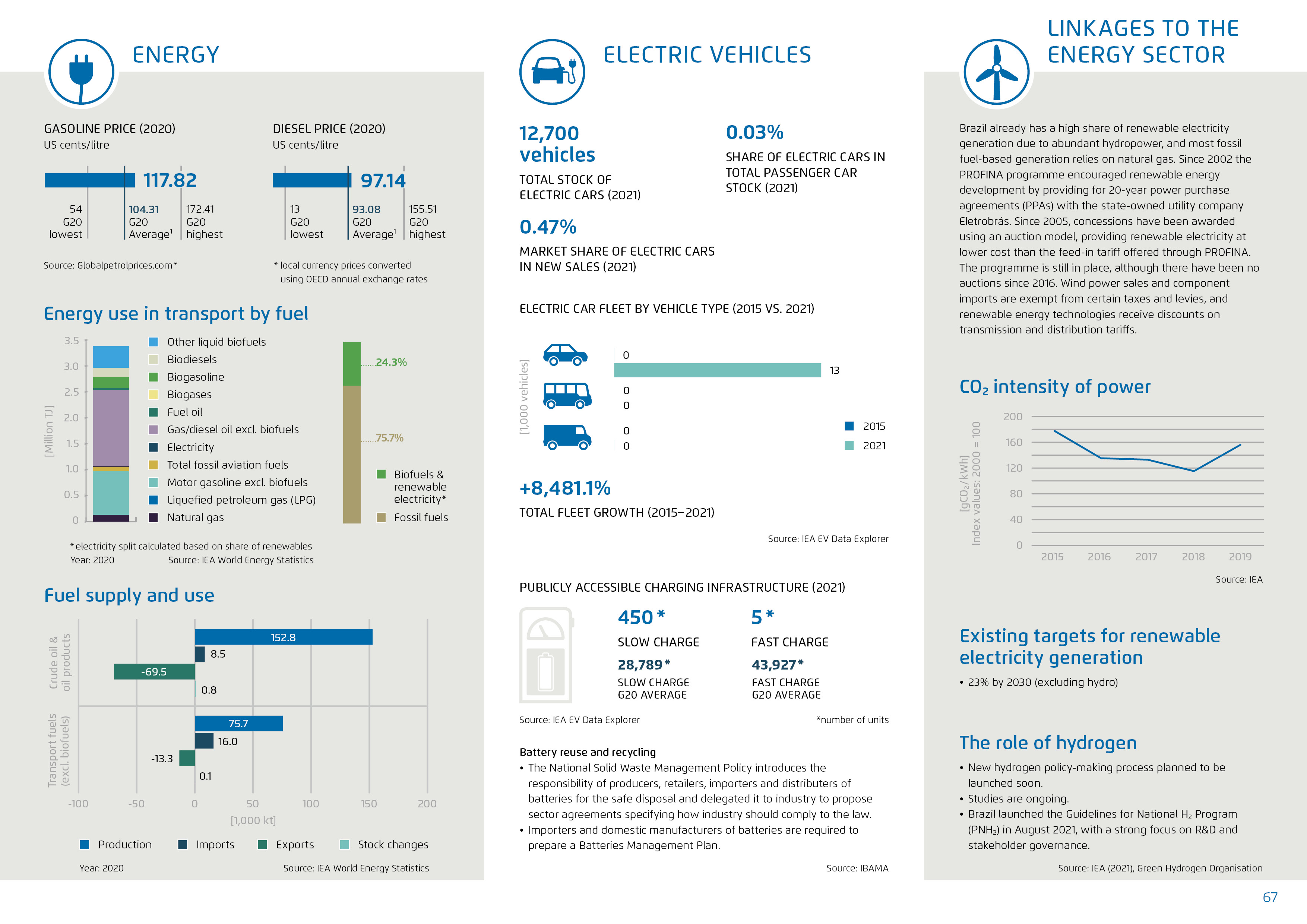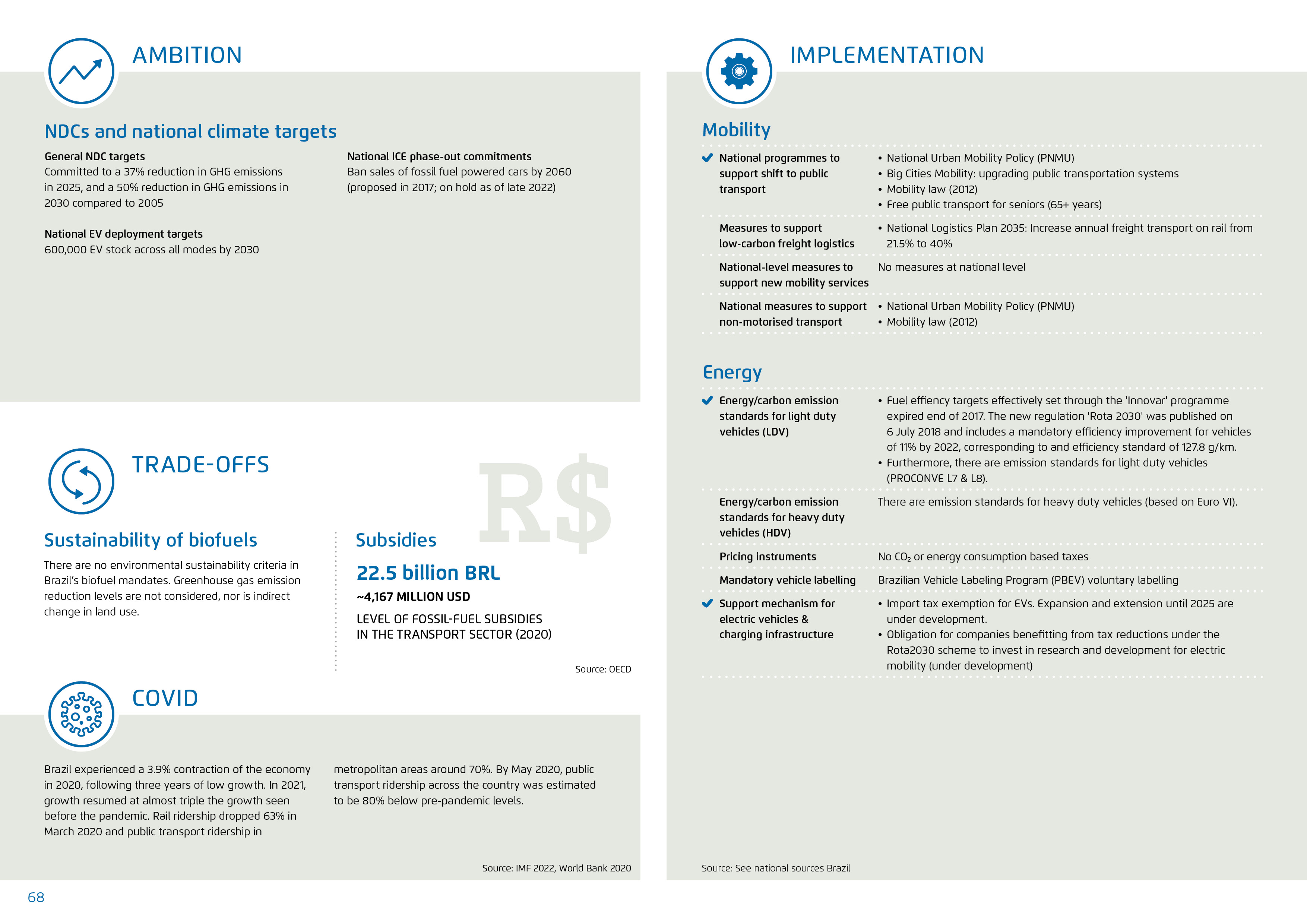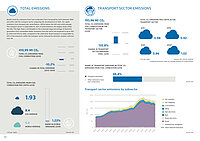This content is also available in: German
Brazil
Net-zero target: 2050 / Motorisation rate (2020): 488,7 vehicles per 1,000 inhabitants / Change in transport sector emissions (1990-2019): 135,8 % / Projected total CO2 emissions per capita in the transport sector in 2030: 1,02 t
Brazil is characterised by long travel distances, with most urbancentres lying along its 7,500 km coastline. Inland areas are sparsely populated. Air transport plays an important role, with 4,000 airportsin operation, the second largest number globally. Brazil has large highway and rail networks. Rail is mostly used for freight transport. Although Brazil has an extensive network of navigable rivers, just 14% of cargo is transported using inland navigation.
Brazil did not yet set any sector-specific targets for 2030 that would support its objective to achieve climate neutrality by 2050. Although Brazil has enacted a range of measures, particularly in the area of biofuels, there are still significant gaps in the promotion of public transport and new modes of transport. The 2018 'Rota 2030' regulation includes a mandatory efficiency improvement for vehicles of 11% by 2022 and tax reductions for electric vehicles.
Key figures on transport and climate
Published in Towards Decarbonizing Transport 2023.








